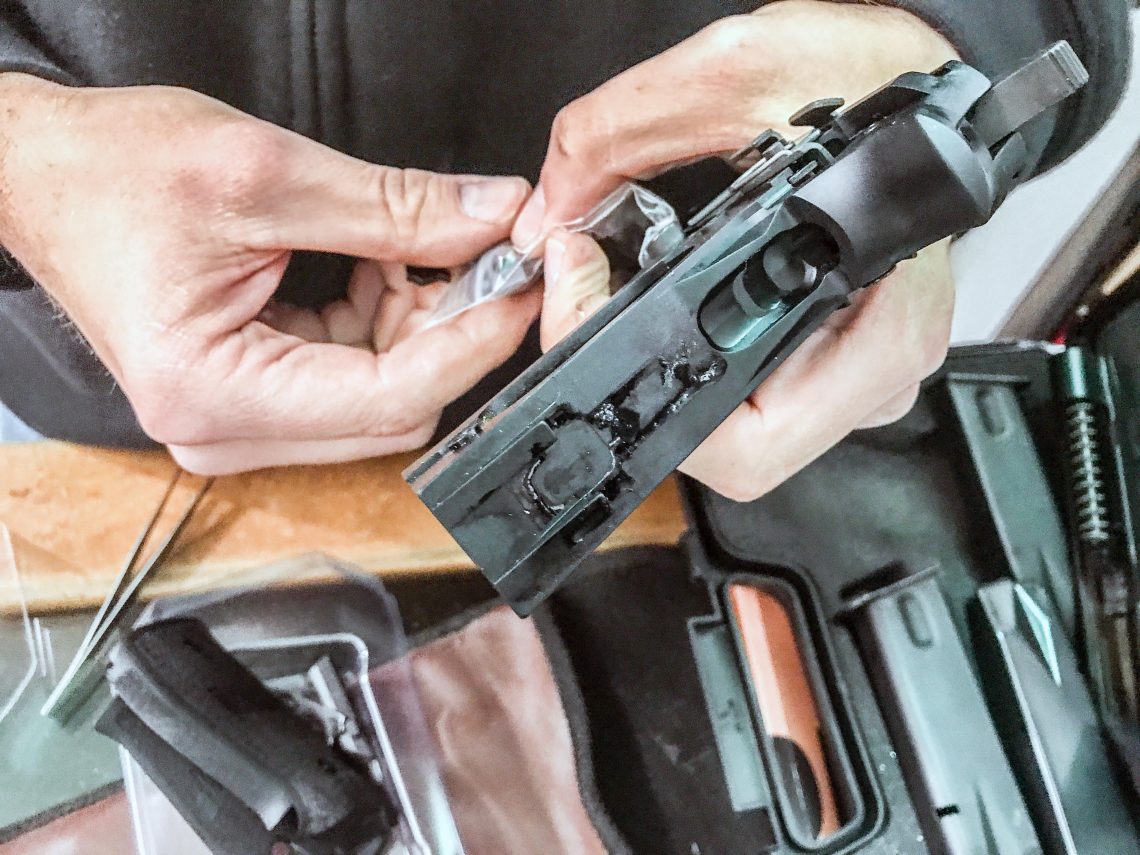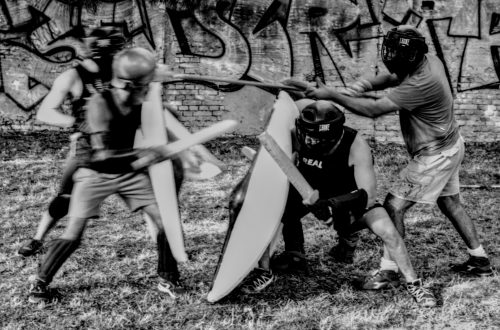
Servicing a Sig Sauer P226
This frame came together as a study of routine and tactility rather than drama. The hands, well-worn and pragmatic, are in mid-action—focused, unposed, doing what they’ve likely done a hundred times before. It’s not a glamour shot of a weapon. It’s a photograph of labour, care, and the quiet diligence of someone who knows their way around a mechanical system.
The Sig Sauer P226, known for its precision and reliability, has always struck me as more tool than totem. That sense informed how I chose to shoot this: close, compressed, honest. I avoided depth-of-field tricks or shallow focus. The visual language here is functional, echoing the subject matter. The background clutter—the case, the slide, the disassembled grip—isn’t a distraction; it’s context. It grounds the moment in reality, rather than trying to stylise it into abstraction.
From a technical perspective, the image rides the edge of overexposure in the highlights, especially on the skin tones and the steel. I pushed the ISO higher than I’d have liked, which introduced a fine grain I chose not to clean out. It feels fitting. The photograph has a slight rawness to it, mirroring the oil, carbon residue, and scratched plastic that define the surface textures.
Compositionally, I let the hands do the talking. The diagonal pull of the right hand counterbalances the static frame of the weapon, giving tension to the image without manufacturing it. It’s not a shot about threat or spectacle. It’s just maintenance—an intimate moment between a person and the object they rely on.
In the end, the image isn’t about the gun. It’s about the knowledge embedded in gesture, the memory in muscle, and the way familiarity turns routine into something almost ceremonial.




